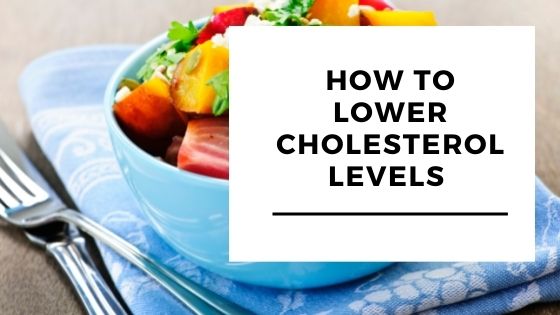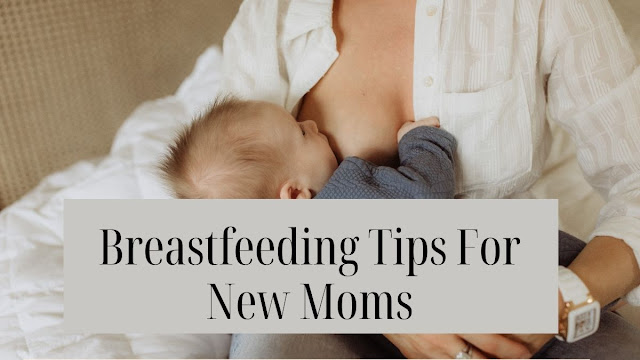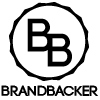Tuesday 31 August 2021
Benefits of Building Your Own Home
Vancouver has the most pleasant climate of Canada’s largest cities. It rarely snows, and the temperature seldom drops below zero. Vancouver homes for sale are the most expensive in Canada, in part due to the temperate climate that makes it the perfect venue not only for a variety of outdoor events and festivals but also for ambitious athletic activities. Vancouver is culturally diverse and welcoming to new immigrants, with 20 percent of its population from China and a further 12 percent coming from South Asia.
If you want to build a house, determine the best plan of action for you and your family. While buying an existing home may be cheaper and more convenient, building a brand-new house gives you a sense of ownership over your living space.
Below are the benefits of building your own home.
Energy Efficient
If environmental friendliness is important to you, it makes a lot of sense to build. Modern building techniques and materials are more energy-efficient than they used to be even 20 short years ago, and you might even be able to construct a zero-energy home if saving energy is your top priority.
No Need for Remodelling
Building your home saves you money on remodeling and additions. One of the first things many homebuyers do when they move into an existing home is a kitchen remodel. Even the bathroom and living room may need some updating to suit your wants. You can avoid remodeling costs by
designing and building your own home.
Pick Your Lot
Choosing a lot for a custom home is a crucial piece of the home-building process. Many factors affect the design and features of the home and can also impact your quality of life in the home.
Two lots with the same square footage may not both be buildable despite having the same area. A long narrow lot will not be as useful as one that is square. The shape of the lot impacts where the home is situated and the size of front, side, and rear yards.
Less Maintenance
Obviously, new construction homes have less maintenance than older existing homes. You won’t have to worry about a leaky roof when it rains or your HVAC breaking in the middle of an arctic blast or heatwave. You can enjoy all the perks of living in a brand new home without maintenance headaches. When things break down, they are typically covered by the builder’s warranty.
Wednesday 25 August 2021
How Can You Lower Cholesterol Levels Fast? Tips On How To Lower Cholesterol
What is cholesterol?
Cholesterol is a waxy chemical substance found in every cell of the body. It is a fat-like substance that moves in the blood. The liver produces about 80% of the cholesterol in the body. We can also get it from food. Cholesterol is only found in foods that come from animals like meat, poultry, fish, eggs, and dairy products.
The liver regulates the cholesterol in the blood. After a meal, cholesterol in the meal is absorbed in the small intestine, metabolized, and stored in the liver. The liver secretes cholesterol as the body needs it.
What is the role of cholesterol in the body?
Cholesterol performs many vital functions in the body. It is found in all the cell membranes of the body. Cell membranes are layers that protect the contents of the cell by acting as a gatekeeper to what things can enter or leave the cell. Cholesterol is also needed to make Vitamin D and some hormones like estrogen and testosterone.
Types of cholesterol
Cholesterol is transported in the blood by particles called lipoproteins. There are three types of lipoproteins that are categorized based on how much protein there is in relation to cholesterol.
Low-Density Lipoprotein
This is typically called "bad" cholesterol. It has more cholesterol than protein. This lipoprotein transports cholesterol throughout the body. They accumulate in the arteries clogging them and making them hard and stiff.
High levels of LDL can increase the risk of heart disease, stroke, and peripheral artery disease by forming cholesterol plaques on the walls of the arteries. As the plaques continue to build up, they narrow the arteries. This is called arteriosclerosis. This will also cause the blood flow to decrease.
If the plaque ruptures, this can cause a blood clot to form. This blood clot can prevent blood flow. If this clot occurs in any coronary arteries in the heart, it can cause a heart attack or myocardial infarction.
High-Density Lipoprotein
This is called good cholesterol. This is made up of higher levels of protein and lower levels of cholesterol. HDL picks up excess cholesterol and takes it back to the liver. Higher levels of HDL reduces the risk of heart disease.
Very Low-Density Lipoprotein
These are particles in the body that carry triglycerides. Triglycerides are important because most of the fat in the body exists as triglycerides. VLDL contains even lower levels of protein than LDL and has been associated with cholesterol plaque build-up.
How to test your cholesterol levels
Cholesterol levels are tested with a blood test. In most cases, you will need to fast for 12 hours before drawing blood for the test.
Accepted cholesterol levels
| Total Cholesterol (mg/dL) | |
|---|---|
| < 200 | Desirable |
| 200 to 239 | Borderline high |
| > 240 | High |
| HDL (mg/dL) | |
| < 40 | Low |
| > 60 | High |
| LDL (mg/dL) | |
| < 100 | Optimal |
| 100 to 129 | Near-Optimal |
| 130 to 159 | Borderline high |
| 160 to 189 | Near high |
| > 190 | High |
How to lower cholesterol by diet
Reduce saturated fats
Saturated fats are mainly found in animal foods, though a few plant foods are also high in saturated fats like coconut oil, palm oil, and palm kernel oil. Some sources of saturated fat are meat products (sausage, bacon, meat, hamburgers), whole and reduced-fat milk, butter and dairies desserts, pizza, cheese, and cookies.
The American Heart Association recommends limiting saturated fats to no more than 7% of calories.
Eliminate trans fats
Trans fats are made by heating liquid vegetable oils in the presence of hydrogen gas and a catalyst. Partially hydrogenated oils can withstand heating without breaking down making them ideal for frying foods. Trans fats are also found in beef fat and dairy fat in small amounts.
Trans fats lower HDL and raise LDL. They can also create inflammation and increase insulin resistance. Insulin resistance is when your body stops responding to insulin, causing an increase in blood sugar levels.
Increase unsaturated fats
Unsaturated fats are liquid at room temperature and are considered beneficial for health. They can improve blood cholesterol levels, reduce inflammation and stabilize heart rhythms. Unsaturated oils are found in food from plants such as vegetable oils, nuts and seeds.
There are two types of unsaturated fats:
Monounsaturated fats which are found in avocados, oils suchs as peanut oil. canola oil, nuts like almonds and seeds like sesame and spinach seeds.
Polyunsaturated fats which are found in walnuts, fish, flax seeds and canola oil.
Eat foods rich in omega 3 fatty acids
Increase your physical activity
Exercise helps boost your body's HDL (good fat).
Quit smoking
Smoking may lower your body's HDL(good fat).
Lose Weight
Drink alcohol in moderation
Drinking too much alcohol can increase your cholesterol level.
Take your medication
Wednesday 11 August 2021
Basic Health Screening Tests for Adults
Basic health screening tests are tests your healthcare provider recommends to identify any undetected disease or conditions. The goal is to discover diseases that can be easily treated if found on time. Getting screened is one of the most important things you can do for your health.
Health screening tests are recommended based on some criteria:
- The condition has an early stage during which symptoms may not be obvious but early detection and treatment will significantly improve the outcomes.
- An acceptable treatment is available for the condition.
- It affects the person's life expectancy and quality of life.
- A simple and affordable screening test for the condition is available.
- It is a common public health problem.
Basic Health Screening Tests
Blood Pressure Screening
Read: What do your blood pressure numbers mean?
Diabetes Screening
Type 2 Diabetes is a common disease worldwide. However, only about a third of the people affected know they have the condition because often there are no symptoms. Early screening can help people avoid complications of this disease like damage to the kidneys, heart, and blood vessels.
If there are other risk factors such as a family history of diabetes, high blood pressure, high cholesterol among others, screening should be done at an earlier age and more frequently.
Read: Diabetes, 5 warning signs you shouldn't ignore
Cholesterol/lipid profile
Mammogram
Pap Smear
Colonoscopy
Tuesday 3 August 2021
Best Breastfeeding Tips For New Moms
Congratulations, you have a new baby! Once, you've given birth, breastfeeding is one important thing you can do to protect your baby and help to promote good health. Along with saving you money on formula, breastfeeding can also help you to keep your medical bills down.
When babies are breastfed, they have more immunity against ear infections, respiratory infections, and allergies.
During the first week of your baby's life, your breasts will produce colostrum for your baby to drink. Colostrum is rich in antibodies and aids the baby's immune system. It also helps him pass his first bowel movement, which is called meconium.
Meconium is black and tarry-looking and is in the first few diapers after birth. Then it begins to transition to a brown substance and after your milk comes in, it becomes a yellow, mustardy stool that is loose and watery.
Sucking on the breast will also help with jaw alignment and development. So, there is less need for costly orthodontic work when the child gets older.
Data from a study with almost 9,700 children in 1981 concluded that longer breastfeeding times correlated with a lower risk of malocclusion (misalignment of teeth).
Breastfeeding’s impact on jaw growth is also good for the development of a baby’s airway. This may help prevent problems with sleep-disordered breathing, such as sleep apnea.
Breastfeeding also offers many benefits for the mom as well. The baby sucking the breast will cause contractions right after birth, leading to less bleeding for the mom, and helping her uterus return to its shape before pregnancy much faster.
Breastfeeding also burns calories, so a mom can lose weight much faster than if she fed her baby with a bottle. Breastfeeding creates a special bond between the mother and the baby.
Getting Started with Breastfeeding
Breastfeeding is an art that will require a lot of patience and a lot of practice. No one expects you to be an expert when you first start, so you should not hesitate to ask for advice or have a nurse show you what you need to do.
Once you start, keep in mind that nursing should not be painful. When your baby latches on, pay attention to how your breasts feel. If the latching on hurts, break the suction then try again.
How much should newborns breastfeed?
You should breastfeed quite frequently, as the more you nurse the more milk you will produce. Breastfeeding for 10-15 minutes per breast 6- 10 times every 24 hours is an ideal target.
Feedings can take 40 minutes or longer, therefore you will want a cozy spot where you will not be bothered.
Breastfeeding and positioning
For some people, the process of breastfeeding seems to come naturally to them, there is a level of skill required for successful feeding and a correct technique to use. Incorrect positioning is one of the biggest reasons for unsuccessful feeding and it can even injure the nipple or breast quite easily.
Your technique and positioning are important in ensuring that your breastfeeding experience is a great one. A few different positions that can be used to make the experience more comfortable for you and your baby. Some of these positions include:
1. Upright
The sitting position where the back is straight. Sit up either in bed or a comfortable chair or couch with pillows supporting your back and head. Place a pillow on your lap and put the baby on top of the pillow in your arms, you can rest your arms on the pillow to make it easier to bring the baby up to your breast. Bend your knees to make this even easier to have baby latch on.2. Mobile
This is where the mother carries her baby in a sling or baby carrier while breastfeeding. Doing this allows the mother to carry on with other activities.3. Lying down
This is good for night feeds or for those who have had a cesarean section. Lay down on your side with pillows behind you to support your back. Lay baby facing you with her head on a pillow your breast should be level with baby's mouth. Bend your legs with a pillow between your knees and then have baby latch on.4. The Clutch Hold
This is also known as the football hold. This position is also good when nursing twins as it allows the mom to have a baby on each side. Sit down and tuck your baby under your arm almost like a handbag. Rest baby's head on a firm pillow on your lap. Ensure that baby's feet are behind your back. Your hand is at the back of the baby's neck, not on the baby's head. Your arm will extend down the baby's back, guide the baby to latch on.
Anytime you don't feel comfortable with a feeding position, always stop and switch to a different position. Each position is different, while some mothers prefer one position, others may like a totally different position. All you need to do is experiment and see which position is best for you.
Breastfeeding Complications
Sore Nipples
A lot of mothers complain about sore nipples that make breastfeeding painful and frustrating. Improperly positioned babies that suck really hard can make the breasts extremely sore. Here are some ways to ease your discomfort:
- Make sure your baby is in the correct position and latching on properly.
- Air out your nipples after breastfeeding
- After breastfeeding, apply some ultra-purified, medical-grade lanolin, making sure to avoid petroleum jelly and other products with oil.
- Make sure to wash your nipples with water.
- Many women find teabags ran under cold water to provide some relief when placed on the nipples.
Clogged milk ducts
Breast Infection









